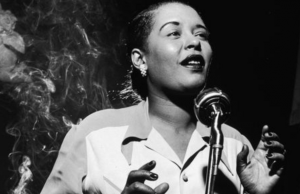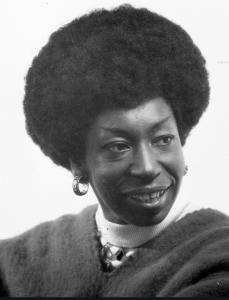Reclamations of black identity: through the lens of the black woman.
Introduction
From the trans-Atlantic slave trade to modern-day political and social climates, the criminalizing and disenfranchising of the black body has produced a world in which the black body is viewed as inferior and  is treated in a sub-human manner. In times of racial apartheid within the Americas, many turned to art, music, and performance to shape conversations about social and cultural climates. Those who took the initiative to reorient discourses around the black experience were often radicalized by the white majority but went on to transform discourse around race in the Americas. This exhibit was curated to commemorate three black women, who throughout the 1900s, took the initiative to uncover the unfortunate experience of black bodies in the Americas.
is treated in a sub-human manner. In times of racial apartheid within the Americas, many turned to art, music, and performance to shape conversations about social and cultural climates. Those who took the initiative to reorient discourses around the black experience were often radicalized by the white majority but went on to transform discourse around race in the Americas. This exhibit was curated to commemorate three black women, who throughout the 1900s, took the initiative to uncover the unfortunate experience of black bodies in the Americas.
Depicted left: Billie Holiday

Billie Holiday, Victoria Santa Cruz, and Lorna Simpson all employ different art forms to not only reflect their social and cultural environments but to challenge the very world in which they inhabit. These artists, although different in their style and execution, invoke themes of memory that bring elements of the individual into the collective experience. Holiday, Cruz, and Simpson all produce work that engages the viewer to examine their own consciousness and fundamental understanding of the world around them.
Depicted right: Victoria Santa Cruz
The very nature of art and its production is to produce a physical and emotional space in which viewers are able to process challenging concepts. This exhibit was created with the intent of bringing  artwork that encourages the engagement between the self and the collective while invoking concepts of memory. This exhibit is attributed to Holiday, Cruz, and Simpson, who not only challenged their social and political environments but constructed a space in which they encouraged others to do so as well.
artwork that encourages the engagement between the self and the collective while invoking concepts of memory. This exhibit is attributed to Holiday, Cruz, and Simpson, who not only challenged their social and political environments but constructed a space in which they encouraged others to do so as well.
Depicted left: Lorna Simpson
Please begin by clicking the arrow:
